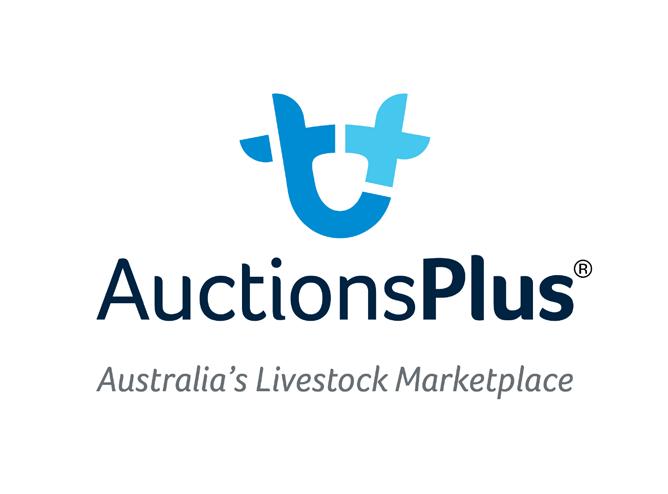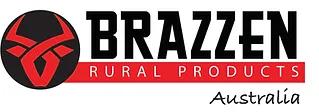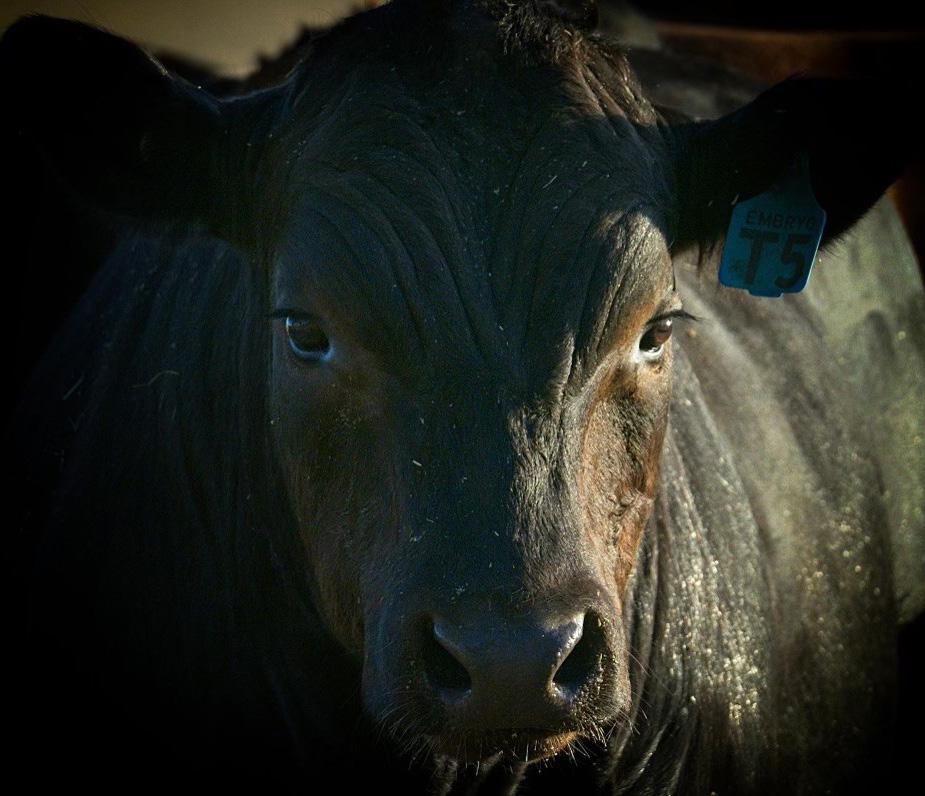

Welcome
Greetings from Michael, John and Misha.
In partnership with Elders and H Francis and Co., or in conjunction with your preferred stock agent, you are warmly invited to the annual Balamara Limousin and Angus Bull Sale in Benger, Western Australia, set for the 22nd March 2024.
The decision to move the sale from Brunswick Junction Selling Complex to ON-FARM reflects our dedication to providing a unique experience. This shift isn’t merely a change of scenery; it’s a conscious effort to prioritise the well-being of our bulls, offering you the chance to inspect them in their natural environment and gain insight into their every day lives.
Bulls will be available for inspection directly adjacent to the auction pavilion from 9:30AWST. Join us for light refreshments upon arrival and immediately after the sale. Michael (Balamara Principal), Craig (Elders) and Scott (H Francis and Co.) will be available to showcase the bulls and answer any queries you may have.
We appreciate your consideration in Balamara supporting your breeding objectives and production systems. Your presence at the bull sale is highly valued, and we look forward to welcoming you at our farm on the 22 March 2024.
Our Warmest Regards,
Michael, John and Misha Mamo





Lot 1 - BALAMARA FAIR N SQUARE T12
Lot 2 - BALAMARA FAIR N SQUARE T3
Lot 3 - BALAMARA FAIR N SQUARE T2
Lot 4 - BALAMARA BIG STAR T4
Lot 5 - BALAMARA BIG STAR T2
Lot 6 - BALAMARA BIG STAR T7
Lot 7 - BALAMARA BIG STAR T5
Lot 8 - BALAMARA NOW OR NEVER T59
Lot 9 - BALAMARA DISCOVERY T9
Lot 10 - BALAMARA DISCOVERY T11
Lot 11 - BALAMARA DISCOVERY T20
Lot 12 - BALAMARA DISCOVERY T23
Lot 13 - BALAMARA NOW OR NEVER T58
Lot 14 - BALAMARA T13
Lot 15 - BALAMARA NOW OR NEVER T40
Lot 16 - BALAMARA NOW OR NEVER T51
Lot 17 - BALAMARAH NOW OR NEVER T61

Additional Sale Information
HEALTH TREATMENTS
• Vaccinated against Pestivirus (BVDV) and all bulls have been tested to show that they are not Persistently Infected animals.
• Vaccinated with 7 in 1
• Vaccinated with Pestiguard
• Vaccinated with Vibrovax against Vibriosis,
• Vaccinated with Piliguard to aid in the prevention of pinkeye
All bulls have been semen and morphology tested prior to sale indicating they are fertile and capable of natural service.
All Angus bulls have been confirmed to not carry recessive genetic conditions
TRANSPORT OF NEWLY PURCHASED BULLS
Save big on herd enhancements with Balamara Bulls! Your investment goes further with free transport within Western Australia and a generous 50% contribution to transport costs to the Eastern States. This offer is available to bulls purchased at auction and with the following cattle transporters:
Within WA:
• Kelly’s Livestock Transport (Steven Kelly) 0426 259 857
For Eastern States purchasers:
• Quicksilver Cattle Transport (Doug Giles) 0427 720 010
PURCHASER:
PRICE:
To assist us in making the appropriate arrangements to deliver bulls as soon as practicable, please complete the BUYERS INSTRUCTION SLIP at the end of the catalogue.
Calving
Calving Ease/Birth Growth Fertility Carcase Feed/ Temp. Structure Selection Index
Fertility Carcase
year
CEDtrs % Genetic differences in the ability of a sire’s daughters to calve unassisted at 2 years of age.
GL days
Genetic differences between animals in the length of time from the date of conception to the birth of the calf.
CEDir % Genetic differences in the ability of a sire’s calves to be born unassisted from 2 year old heifers.
Higher EBVs indicate fewer calving difficulties in 2 year old heifers.
Lower EBVs indicate shorter gestation length.
Higher EBVs indicate fewer calving difficulties in 2 year old heifers.
BW kg Genetic differences between animals in calf weight at birth. Lower EBVs indicate lighter birth weight.
CEDtrs % Genetic differences in the ability of a sire’s daughters to calve unassisted at 2 years of age.
200 Day kg
Genetic differences between animals in live weight at 200 days of age due to genetics for growth.
GL days Genetic differences between animals in the length of time from the date of conception to the birth of the calf.
BW kg Genetic differences between animals in calf weight at birth.
Higher EBVs indicate heavier live weight.
Higher EBVs indicate fewer calving difficulties in 2 year old heifers.
400 Day kg Genetic differences between animals in live weight at 400 days of age. Higher EBVs indicate heavier live weight.
Lower EBVs indicate shorter gestation length.
Lower EBVs indicate lighter birth weight.
600 Day kg Genetic differences between animals in live weight at 600 days of age. Higher EBVs indicate heavier live weight.
200 Day kg Genetic differences between animals in live weight at 200 days of age due to genetics for growth.
Higher EBVs indicate heavier live weight.
MCW kg Genetic differences between animals in live weight of cows at 5 years of age. Higher EBVs indicate heavier mature weight.
Milk kg Genetic differences between animals in live weight at 200 days of age due to the maternal contribution of its dam.
400 Day kg Genetic differences between animals in live weight at 400 days of age.
DtC days
600 Day kg Genetic differences between animals in live weight at 600 days of age.
Genetic differences between animals in the time from the start of the joining period (i.e. when the female is introduced to a bull) until subsequent calving.
MCW kg Genetic differences between animals in live weight of cows at 5 years of age.
SS cm
Genetic differences between animals in scrotal circumference at 400 days of age.
Higher EBVs indicate heavier live weight.
Higher EBVs indicate heavier live weight.
Lower EBVs indicate shorter time to calving.
Higher EBVs indicate heavier live weight.
Higher EBVs indicate larger scrotal circumference.
Higher EBVs indicate heavier mature weight.
Milk kg
CWT kg
DtC days
EMA cm2
SS cm
Rib Fat mm
CWT kg
P8 Fat mm
EMA cm2
Rib Fat mm
Genetic differences between animals in hot standard carcase weight at 750 days of age.
Genetic differences between animals in live weight at 200 days of age due to the maternal contribution of its dam.
Genetic differences between animals in the time from the start of the joining period (i.e. when the female is introduced to a bull) until subsequent calving.
Genetic differences between animals in eye muscle area at the 12/13th rib site in a 400 kg carcase.
Genetic differences between animals in fat depth at the 12/13th rib site in a 400 kg carcase.
Genetic differences between animals in scrotal circumference at 400 days of age.
Genetic differences between animals in fat depth at the P8 rump site in a 400 kg carcase.
Genetic differences between animals in hot standard carcase weight at 750 days of age.
RBY % Genetic differences between animals in boned out saleable meat from a 400 kg carcase.
Genetic differences between animals in eye muscle area at the 12/13th rib site in a 400 kg carcase.
Genetic differences between animals in fat depth at the 12/13th rib site in a 400 kg carcase.
IMF % Genetic differences between animals in intramuscular fat (marbling) at the 12/13th rib site in a 400 kg carcase.
NFI-F kg/ day
Genetic differences between animals in feed intake at a standard weight and rate of weight gain when animals are in a feedlot finishing phase.
P8 Fat mm Genetic differences between animals in fat depth at the P8 rump site in a 400 kg carcase.
RBY % Genetic differences between animals in boned out saleable meat from a 400 kg carcase.
Doc % Genetic differences between animals in temperament.
IMF % Genetic differences between animals in intramuscular fat (marbling) at the 12/13th rib site in a 400 kg carcase.
Higher EBVs indicate heavier live weight.
Higher EBVs indicate heavier carcase weight.
Higher EBVs indicate larger eye muscle area.
Lower EBVs indicate shorter time to calving.
Higher EBVs indicate larger scrotal circumference.
Higher EBVs indicate more fat.
Higher EBVs indicate heavier carcase weight.
Higher EBVs indicate more fat.
Higher EBVs indicate higher yield.
Higher EBVs indicate larger eye muscle area.
Higher EBVs indicate more intramuscular fat.
Higher EBVs indicate more fat.
Higher EBVs indicate more fat.
Lower EBVs indicate more feed efficiency.
Higher EBVs indicate better temperament.
Higher EBVs indicate higher yield.
Claw Set score Genetic differences in claw set structure (shape and evenness of claws). Lower EBVs indicate a lower score.
Higher EBVs indicate more intramuscular fat.
NFI-F kg/ day Genetic differences between animals in feed intake at a standard weight and rate of weight gain when animals are in a feedlot finishing phase.
Foot Angle score
Genetic differences in foot angle (strength of pastern, depth of heel). Lower EBVs indicate a lower score.
Lower EBVs indicate more feed efficiency.
Doc % Genetic differences between animals in temperament.
Leg Angle score Genetic differences in rear leg structure when viewed from the side (angle at front of the hock).
Claw Set score Genetic differences in claw set structure (shape and evenness of claws).
$A $
Foot Angle score Genetic differences in foot angle (strength of pastern, depth of heel).
Genetic differences between animals in net profitability per cow joined in a typical commercial self replacing herd using Angus bulls. This selection index is not specific to a particular market end-point, but identifies animals that will improve overall net profitability in the majority of commercial, self replacing, grass and grain finishing beef production systems.
Leg Angle score Genetic differences in rear leg structure when viewed from the side (angle at front of the hock).
$A $
$A-L $
Genetic differences between animals in net profitability per cow joined in a typical commercial self replacing herd using Angus bulls. This selection index is not specific to a particular market end-point, but identifies animals that will improve overall net profitability in the majority of commercial, self replacing, grass and grain finishing beef production systems.
Genetic differences between animals in net profitability per cow joined in a typical commercial self replacing herd using Angus bulls. This selection index is not specific to a particular market end-point, but identifies animals that will improve overall net profitability in the majority of commercial, self replacing, grass and grain finishing beef production systems.
$A-L $
The $A-L index is similar to the $A index but is modelled on a production system where feed is surplus to requirements for the majority of the year, or the cost of supplying additional feed when animal feed requirements increase is low. While the $A aims to maintain mature cow weight, the $A-L does not aim to limit the increase in mature cow weight as there is minimal cost incurred if the feed maintenance requirements of the female breeding herd increase as a result of selection decisions.
Genetic differences between animals in net profitability per cow joined in a typical commercial self replacing herd using Angus bulls. This selection index is not specific to a particular market end-point, but identifies animals that will improve overall net profitability in the majority of commercial, self replacing, grass and grain finishing beef production systems.
The $A-L index is similar to the $A index but is modelled on a production system where feed is surplus to requirements for the majority of the year, or the cost of supplying additional feed when animal feed requirements increase is low.
While the $A aims to maintain mature cow weight, the $A-L does not aim to limit the increase in mature cow weight as there is minimal cost incurred if the feed maintenance requirements of the female breeding herd increase as a result of selection decisions.
Lower EBVs indicate a lower score.
Higher EBVs indicate better temperament.
Lower EBVs indicate a lower score.
Higher selection indexes indicate greater profitability.
Lower EBVs indicate a lower score.
Lower EBVs indicate a lower score.
Higher selection indexes indicate greater profitability.
disclaimer and privacy information
Attention Buyer
Animal details included in this catalogue, including but not limited to pedigree, DNA information, Estimated Breeding Values (EBVs) and Index values, are based on information provided by the breeder or owner of the animal. Whilst all reasonable care has been taken to ensure that the information provided in this catalogue was correct at the time of publication, Angus Australia, Australian Limousin Breeders Society and the Vendor will assume no responsibility for the accuracy or completeness of the information, nor for the outcome (including consequential loss) of any action taken based on this information.
Parent Verification Suffixes
The animals listed within this catalogue including its pedigree, are displaying a Parent Verification Suffix which indicates the DNA parent verification status that has been conducted on the animal. The Parent Verification Suffixes that will appear at the end of each animal’s name.
Privacy Information
The suffix displayed at the end of each animal’s name indicates the DNA parentage verification that has been conducted by Angus Australia.
PV : both parents have been verified by DNA.
SV : the sire has been verified by DNA.
DV : the dam has been verified by DNA.
# : DNA verification has not been conducted.
E : DNA verification has identified that the sire and/or dam may possibly be incorrect, but this cannot be confirmed conclusively.
In order for Angus Australia to process the transfer of a registered animal in this catalogue, the vendor will need to provide certain information to Angus Australia and the buyer consents to the collection and disclosure of that information by Angus Australia in certain circumstances. If the buyer does not wish for his or her information to be stored and disclosed by Angus Australia, the buyer must complete the form included below and forward it to Angus Australia. If the form is not completed, the buyer will be taken to have consented to the disclosure of such information.
BUYERS OPTION TO OPT OUT OF DISCLOSING PERSONAL INFORMATION TO ANGUS AUSTRALIA
If you do not complete this form, you will be taken to have consented to Angus Australia using your name, address and phone number for the purposes of effecting a change of registration of the animal(s) that you have purchased, maintaining its database and disclosing that information to its members on its website.
I, the buyer of animals with the following idents…………………………………………………………………………………......................................
from member………………………………………………………………............................................................(name) do not consent to Angus Australia using my name, address and phone number for the purposes of effecting a change of registration of the animals I have mentioned above that I have purchased, maintaining its database and disclosing that information to its members on its website.
Name: ……………………………………………………………………...........................
Date: …………………………….........
Signature: …………………………………………………………..................
Please forward this completed consent form to Angus Australia, 86 Glen Innes Road, Armidale NSW 2350.

If you have any questions or queries regarding any of the above, please contact Angus Australia on (02) 6773 4600 or email office@angusaustralia.com.au

“Optimise client production systems by securing genetics that will improve production performance in real working conditions.”


